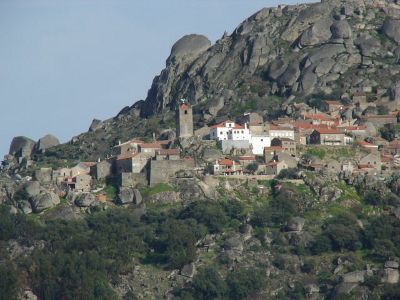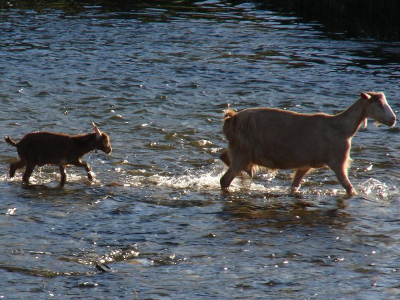
Farming with comfrey
 When I farmed in the North of
Scotland prior to moving to Portugal, I
had Bocking Nos. 4 and 14, together with a large number of plants of
unknown species or varieties that I had collected from various
people. I operated a commercial free-range egg enterprise on this
When I farmed in the North of
Scotland prior to moving to Portugal, I
had Bocking Nos. 4 and 14, together with a large number of plants of
unknown species or varieties that I had collected from various
people. I operated a commercial free-range egg enterprise on this
farm, using mobile night
shelters holding either 80 or 120 hens, with a
total capacity of close to 2000 birds, and the hens had free access to
the comfrey beds. They ignored all the plants.
This is not unusual, and if
you want to offer comfrey to poultry you
might have to cut and wilt it first, possibly even chaffing it. I
understand this particularly applies to No.14. Poultry apparently
find the higher potassium content of this cultivar distasteful when it is growing or offered freshly
cut, although some poultry keepers find their hens will eat it fresh.
I was not interested in
feeding it to hens. I bred meat rabbits
until the increasing egg enterprise meant I had to cut back on the
workload I had, but almost all the rabbits had taken readily to most
comfrey leaves they were offered. Some did not.
I brought a couple of
crown-sets of No.4 with me to Portugal because my
aim was to feed it to livestock during the normal summer drought, the
14 with its higher potash being preferred for plant food --- in
compost, as a mulch, directly in the ground underneath potatoes, and as
a liquid fertiliser.
 I keep a small goat herd of up to
20 does, and they have never been
fond of comfrey, usually pulling the leaves out of the feeders to taste
and then discarding them. I tried several times each summer with only a
few does and kids being interested. Consequently I used most of
the crop each year as compost or mulch.
I keep a small goat herd of up to
20 does, and they have never been
fond of comfrey, usually pulling the leaves out of the feeders to taste
and then discarding them. I tried several times each summer with only a
few does and kids being interested. Consequently I used most of
the crop each year as compost or mulch.
This year has been
particularly dry and therefore no fresh grazing, as
I was unable to irrigate, and very little browse. As a last
effort, and as a complement to the green corn and cobs I was feeding
(corn being low in calcium and high in phosphorus, whilst comfrey is
the reverse, and also much higher in protein), I decided to give them
one last try. Most of the goats took to the comfrey by about the
end of July, and all of them eventually. My limited supply had to
be fed very sparingly until I decided I had to stop cutting in mid
October to give the plants a chance to build up reserves before winter.
Alan
McDonald has been experimenting with comfrey on farms around the world
for fifteen years. His new book, How Not to Make
Millions --- But Still Enjoy a Rich Rural Life is available
for 99 cents on Smashwords, and you can also read about his adventures
for free on his blog. For
background information on comfrey, check out yesterday's post "Types of
comfrey."
Want more in-depth information? Browse through our books.
Or explore more posts by date or by subject.
About us: Anna Hess and Mark Hamilton spent over a decade living self-sufficiently in the mountains of Virginia before moving north to start over from scratch in the foothills of Ohio. They've experimented with permaculture, no-till gardening, trailersteading, home-based microbusinesses and much more, writing about their adventures in both blogs and books.
Want to be notified when new comments are posted on this page? Click on the RSS button after you add a comment to subscribe to the comment feed, or simply check the box beside "email replies to me" while writing your comment.

Interesting topic. I just started growing Bocking 14 this year. It's doing great so far. I plan to mostly use it for compost/green mulch, but I might try it out on the goats (not mine, they live next door).
It's also nice to hear from another author. I'm eager to check out Alan's book.